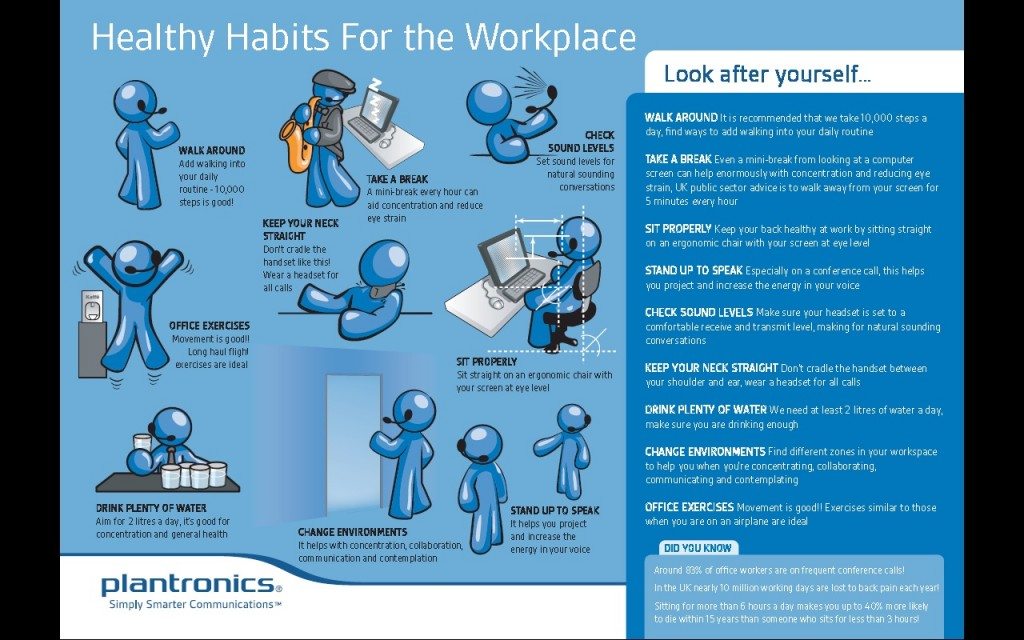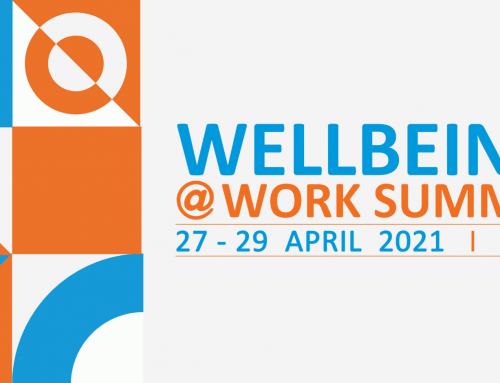
So what to do if you either run a business or a department or work in a business where health and wellbeing isn’t currently high on the company’s agenda?
This is a question that i have been faced with over many years. Up until this point, my solution has been to focus on my own wellbeing and support only those people who ask, simple.
However, about 8 months ago, things started to change. My company is a progressive employer, and as such we talk a lot about ways of developing our people to help them be more skilled individuals who are better able to support the strategic goals of the company.
The strategy around wellbeing, though, has been more limited. So over the last few months, I have been working with my colleagues in Occupational Health to create a more comprehensive framework and toolkit to support the wellbeing of our 3k employees, some of who are very engaged, but many of whom aren’t.

And yet, many UK companies are not doing very much to support the wellbeing of their employees.
Indeed, flicking through a copy of HR Magazine in the UK last week, I came across some interesting research that indicated that only 17% of companies have a strategy for their employee’s wellbeing and also believe it links directly to their success of their business. A further 47% run some wellbeing initiatives, but don’t really have a strategy in place, and this is the group that my company is currently part of.
US companies are certainly ahead of their UK counterparts. One study showed that US employers are investing $521 per employee, double what they invested 4 years ago. And it’s paying off. Those companies who are proactively promoting wellbeing initiatives are reporting improved employee engagement; reduced absenteeism and, above all, improved productivity!
So what are the companies who are taking the wellbeing of their employees doing?
I was at the Health@Work Conference last week in London and was very impressed to hear their experience of British Gas who have created a leading-edge wellbeing programme to support their 28k staff, implementing initiatives including:
- Simple exercises staff can do at work to get them moving
- Healthy Eating Your Way – an online resource which uses the traffic light system to help staff make healthier food and drink choices
I also interviewed one of the directors from Google UK, Richard Robinson, who ran through what Google does to ‘make their employees, the happiest and healthiest people on the planet’. Initiatives that include:
- a comprehensive website to pull everything together;
- a state of the art gym;
- a canteen based on Borough market;
- the reduction of snacks in their micro kitchens to ‘avoid temptation’.
Not everyone can do what Google does, but we can certainly get inspired by their example.
But all of these things cost money, what about the results?
Legal & General launched a wellbeing programme a few years ago and saw some very impressive results including:
- 44% medical improvement;
- 42% lifestyle improvement;
- 35% improved eating;
- 25% lost weight;
- 18% increased exercise.
However, whilst few can seriously deny that employee wellbeing is critically important to business success, in our age of ‘too many things going on’, driving the wellness agenda can often fall between the tracks if the company doesn’t have a wellbeing manager in place.
So if you work in a company where wellbeing isn’t currently part of the companies’ agenda, here are a few tips to help you be resourceful and start to create a healthier workplace for yourself, your team and your colleagues:
- Talk to Occupational Health or HR to find out what initiatives are already in place, there are probably quite a few things happening, but awareness and engagement is low, particularly in larger organisations
- Use your company intranet or internal social media platform to find other like-minded people to connect with, share wellbeing tips, resources and brainstorm ideas
- Plan some local initiatives: a lunch-time walking club, a running club, seminars on healthy eating or stress management; invite local health practitioners in to exhibit their services; set up a weight loss group or fitness classes – just a few things that can be done in a small way that will create a ripple effect
Consider some simple habits that could be incorporated in every day tasks to support well-being (going for a walk whilst having a one-to-one meeting; standing-up whilst on the phone.
- Do some research into the wellbeing supplier space; there’s a lot of innovation going on in the wellbeing technology space which could make organising wellbeing programmes much more efficient, without costing the earth.
So if you’re keen to create a healthier workplace take action now by thinking of the names of two or more like-minded people at work who you could connect with and brainstorm some initiatives that could be organised to start the ripple effect.
As ever, let me know your thoughts by leaving me a comment below.









